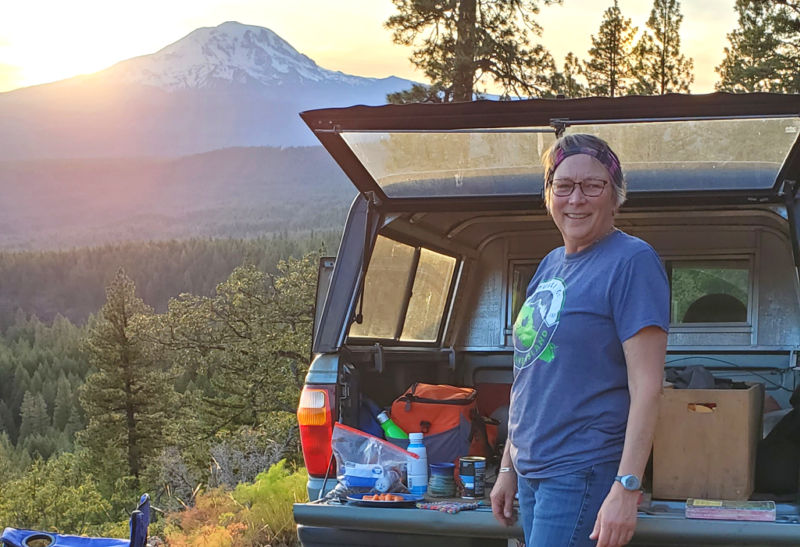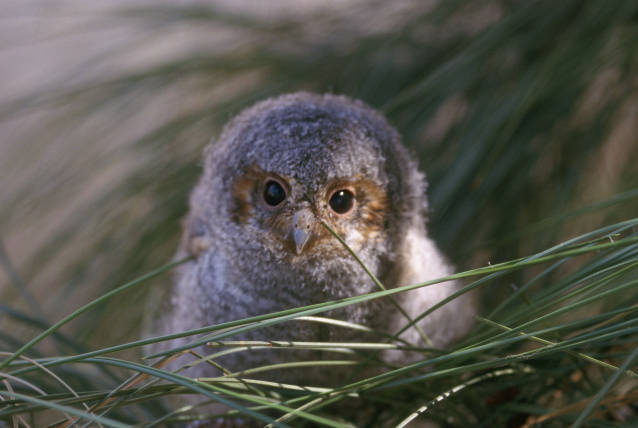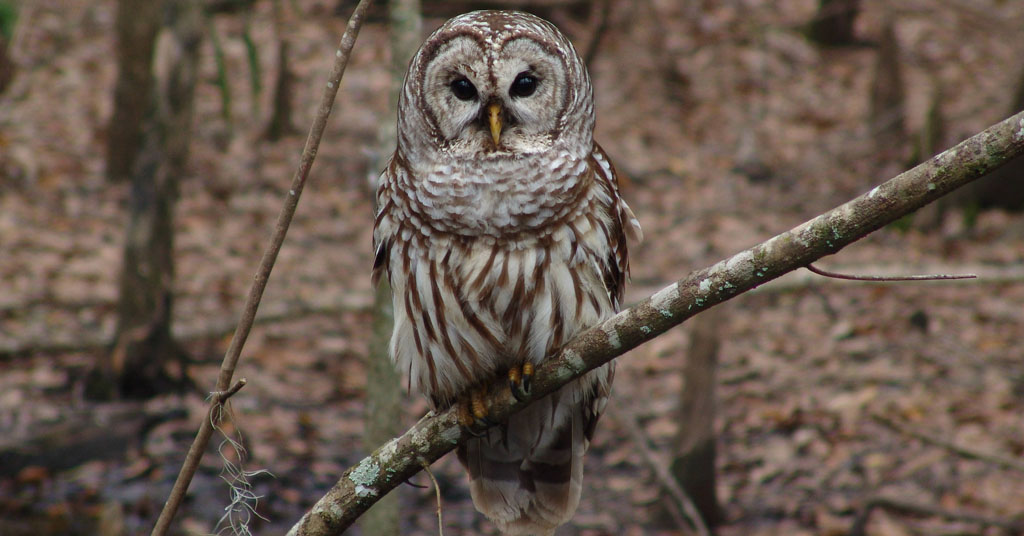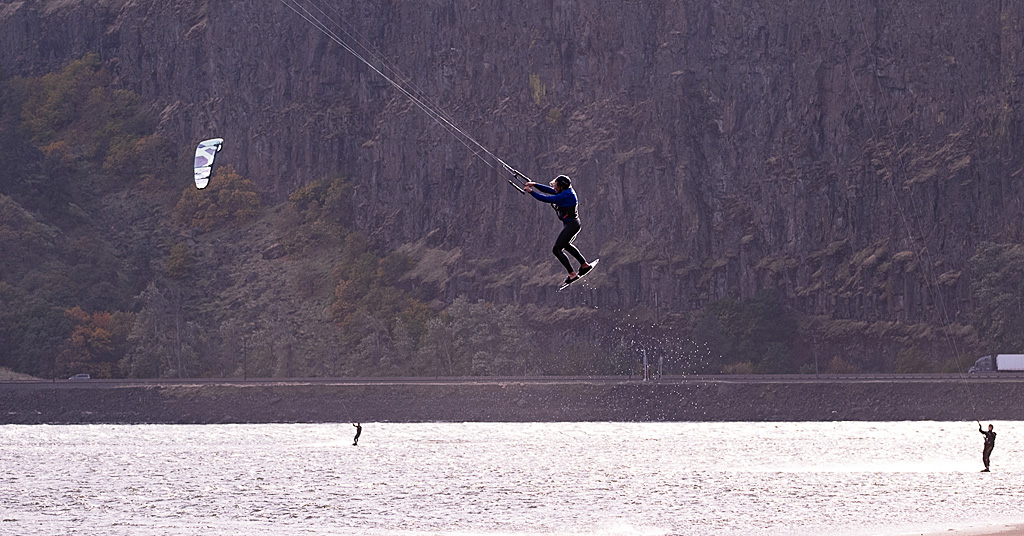Rare owl among species that inhabit newly designated, 11,000-acre Klickitat Canyon Conservation Area in Southwest Washington
Video highlights of the newly established Klickitat Canyon Conservation Area. Courtesy of Columbia Land Trust
By Jim Drake. July 30, 2020. More than a decade of work by one of the largest conservation land trust agencies in the Columbia River Basin was finalized last week with the purchase of a 4,900-acre parcel of land along the Klickitat River in Klickitat County in Southwest Washington.
The purchase represents the third and final phase of a project led by Cherie Kearney, forest conservation director for the Columbia Land Trust. It establishes the Klickitat Canyon Conservation Area at 11,000 acres—the largest land holding in the Vancouver, Washington-based organization’s portfolio.
The wild and scenic riverfront property is home to storied salmon runs, dramatic basalt walls and ponderosa pine forests. Now that Columbia Land Trust are stewards of the area, the stunning wildlife habitat will be protected from development.
“This is the biggest piece of land we’ve ever bought,” says Kearney. “The other thrill for me is the bipartisan, diverse support that we’ve been able to enjoy over many years, working with the county commissioners, the community, the SDS Lumber Company, local ranchers and certainly with the Yakama Indian Nation.”
Perseverance rewarded
The Klickitat Canyon Conservation Area has been described as “a miniature Grand Canyon.”
“There are breathtaking vistas with sheer, jagged columnar basalt cliffs,” says Columbia Land Trust communications director Jay Kosa. “It’s prime elk and deer habitat. People raft and kayak through the canyon, and there are great sightseeing opportunities.”
The organization credits the success of the project to years of dogged determination, patience and a willingness to negotiate common ground with all parties involved.
The bulk of the land was owned by SDS Lumber and the property borders the Yakama Nation Reservation.

Washington’s newly designated Klickitat Canyon Conservation Area is just southeast of Mt. Adams. Courtesy of Columbia Land Trust
“We cooperatively worked with SDS, who has always had a priority of buying timberland for their regional mill,” says Kearney. “For years the trust has had conversations with them about us purchasing that area for conservation, allowing SDS to reinvest in higher-grade timberland.”
Columbia Land Trust’s staff of 33 has conserved just over 49,000 acres in Washington and Oregon. Kearney and the Columbia Land Trust have been working to conserve land on the Klickitat River since 1997. The canyon area has been atop their top priority list from the start.
“We’ve worked hard to protect this wild and scenic river because of the fact that it’s undammed, at least half of it flows through protected reservation or national forest, and the lower portions are so important for the oak and pine forests, and the salmon and steelhead,” says Kearney. “Being able to keep the canyon from converting to development or having bridges or things coming into it was a high priority.”
Diverse habitat
Funding for Columbia Land Trust’s purchase came from Washington State’s Wildlife and Recreation Program, grants from the Endangered Species Act and the Federal Land and Water Conservation Fund.
“We got a total of $5 million dollars from the Endangered Species Act, which requires the buying of habitat as part of the approach to saving endangered species,” says Kearney. “We now have the responsibility to manage bull trout and the northern spotted owl, which are on the property as you go east toward the reservation.”

Peak partner: For more than a decade, Cherie Kearney patiently brought stakeholders together. Courtesy of Columbia Land Trust
The Klickitat Canyon Conservation Area is a special environmental region of the state because of its topographic variety and climate resiliency. Due to its sprawling landscape and variegated topography, the area is unique for several reasons.
“Climate resiliency means it has a lot of diversity for habitat, low, cool river areas, high, hot exposed areas … if you were walking across it you would continue to be surprised by what you’d find,” says Kearney. “We’ll manage the Klickitat property from a forestry conservation angle—so that’s less than a timber company would do for revenue—but we still need to work on fire management because we want to be good neighbors and good citizens.
“And of course we want to manage wildlife habitat.”
Bird discovery
A crew from Columbia Land Trust recently spent a few days at Klickitat Canyon on a special mission. An overnight camping trip to do research connected to a grant from the American Bird Conservancy.
The mission? Find the elusive flammulated owl.
Reddish-brown flammulated owls, which migrate from Central America and Mexico, spend most of their time near the tops of pine or fir forests. The owls are tiny—typically no more than 6 inches long—and tricky to spot. But their soft, low-pitched hoot, which suggests a much larger bird, is distinctive.

They’re there: You might not see them because flammulated owl nests are usually 15 to 40 feet above ground. Young leave the nest after about 25 days. Photo by Dave Menke, USFWS
“The conservancy had a grant that wasn’t able to be used for the Deschutes Land Trust, and they asked us if they could apply it here if we had flammulated owls, and we weren’t sure,” says Kearney.
She accepted the responsibility of doing the required surveys.
It turns out the Klickitat Canyon has another unexpected ecological niche—habitat for neo-tropical migratory birds.
“You basically have to go out at night and use your voice to hoot for these owls. My husband and I were the last team, and we heard their distinctive call,” says Kearney. “We surveyed all night until one o’clock in the morning and I just thought ‘what a thrill it is in life to find these owls.’ … That, for me, is very gratifying.”
Canyon access
The Columbia Land Trust will maintain public access to the Klickitat Canyon Conservation Area. Located near Glenwood, Washington, and the Conboy Lake National Wildlife Refuge, the Conservation Area is adjacent to the Klickitat Canyon Community Forest and Natural Resources Conservation Area, and the tribal government land of the Yakama Indian Reservation.
“As with all of the Conservation Area, the property has historically been managed for timber so there are no hiking trails,” says Kosa. “Columbia Land Trust does intend to maintain existing public access, however, for recreational activities including rafting, wildlife watching, hunting and fishing.”

Big drop: Locally known as “colliding waters,” the junction of the Klickitat River (left) and White Creek (right, through tree) is just one of the area’s dramatic sights. Photo by Jurgen Hess
There are also several quality hiking trails and camping options a few river miles down on the lower Klickitat, according to Kosa.
Roads onto the property from the public Mt. Adams Highway are walk-in only and access may be restricted during fire season in cooperation with neighboring landowners.
The Glenwood Highway has some turnoffs with stunning vistas of the canyon.
Jim Drake is a freelance writer and media consultant living in Hood River, Oregon.











Yippee!! Something to celebrate.